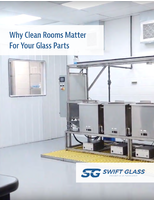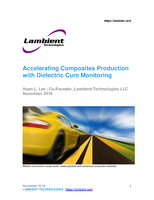ARTEL Extreme Pipetting Expedition Links Dry Heat to 35 Percent Error in Liquid Handling
Visits Death Valley for Mission #3
Los Angeles, CA (November 7, 2007) - At Death Valley for Mission #3 of the Extreme Pipetting Expedition, ARTEL found that pipettes under-deliver by up to 35 percent in dry and hot environments. While volume delivery errors were partially reduced by pre-wetting pipette tips, under-delivery still persisted, and the pipettes were found to operate out of specification in most instances.
Laboratory technicians commonly encounter dry heat in their own work environments, which, although not as extreme as Death Valley, can nonetheless affect pipette performance and compromise assay results. For example, laboratories using analytical instruments, ovens, incubators, freezers and other devices requiring high power or open flames are prone to heat and low humidity. Heating and air-conditioning systems not equipped with humidifiers may also contribute to dry heat. To ensure pipetting accuracy and precision and strengthen data integrity, it is essential that laboratory scientists understand and compensate for this source of error.
ARTEL is releasing the results from Mission #3 at the Association for Molecular Pathology (AMP) 2007 Annual Meeting and Exhibits (booth #54), November 7-10, 2007, at the Hyatt Regency Century Plaza Hotel in Los Angeles, CA. Complete results can be found at www.artel-usa.com/extreme.
"Laboratories often experience changes in humidity and temperature throughout the course of a year and data may be at risk," says George Rodrigues, Ph.D., Senior Scientific Manager, ARTEL. "Humidity and temperature can also vary across laboratories in different regions, between laboratories on different floors, and even in different sections of the same laboratory."
Like in previous missions, error caused by the environmental conditions at Death Valley was greater when pipettes were set to their minimum volumes than when they were set to their maximum volumes. A two-microliter pipette set to deliver its minimum volume of 0.2 microliter without pre-wetting under-delivered by 34.7 percent. Pre-wetting reduced the error to 30.9 percent, but the pipette was still operating outside its minimum-volume accuracy specification of 12 percent. When set to its maximum volume of two microliters without pre-wetting, the pipette under-delivered by 7.0 percent without pre-wetting and by 4.8 percent with pre-wetting, both outside of the manufacturer's accuracy specification.
When working with larger liquid volumes, errors were also induced by the hot and dry conditions, but on a smaller magnitude. Without pre-wetting, a 20-microliter pipette at its minimum volume under-delivered by 16.8 percent, which is a significantly lower inaccuracy than exhibited by a non-pre-wet two-microliter pipette at its minimum volume (34.7 percent error). Pre-wetting the 20-microliter pipette prior to dispensing its minimum volume of two microliters reduced error to 7.4 percent.
"Based on data taken at Death Valley, we highly recommend pre-wetting pipette tips to reduce volume loss when pipetting in dry and hot environments," says Doreen Rumery, Laboratory Technical Manager and Quality Control Manager, ARTEL.
Liquid handling error experienced in dry heat is largely due to evaporation. The evaporation of a miniscule amount of liquid inside the pipette tip has a large effect on pipetted volumes, especially when target volumes are in the microliter range. When one microliter of liquid evaporates, it converts into more than 1,000 microliters of gas, expanding by a factor of 1,250 to 1,450 depending on temperature. This expansion prevents the pipette from aspirating the desired target volume.
A 3.3 million acre desert, Death Valley was selected as the site for Mission #3 because of its iconic hot and dry climate. Surrounded by mountains, the valley captures and retains extreme amounts of heat to create one of the hottest environments on earth, commonly exceeding 49oC (120oF). Death Valley is also the driest locale in the United States, receiving fewer than two inches of rain annually.
The Extreme Pipetting Expedition is a multi-phase, year-long scientific study to illustrate the impact of laboratory environmental conditions on pipetting performance and data integrity. Previous missions explored how barometric pressure and how pipetting warm and cold liquids affect data integrity. More information can be found at www.artel-usa.com/extreme.
About ARTEL
ARTEL is the worldwide leader in liquid handling quality assurance. ARTEL manufactures the most accurate, precise and easy-to-use systems for ensuring data integrity in liquid volume measurement. ARTEL systems, based on proprietary Ratiometric Photometry, conform to ISO 8655-7 and provide NIST-traceable results. In addition, ARTEL provides liquid handling quality assurance support and consultation services including on-site pipetting technique training and certification for pipette users and laboratory managers, as well as Liquid Handler Performance Verification services for automated laboratories. Since 1982, ARTEL technology has been proven in daily use in thousands of laboratories including pharmaceutical, clinical, forensic, public health and environmental. Leading institutions such as Amgen, ARUP, Bristol-Myers Squibb, Celgene, Centers for Disease Control, DuPont, Eli Lilly, FBI, Genentech, Genomic Health, Mayo Clinic, Memorial Sloan-Kettering Cancer Center, Merck, Pfizer, Procter & Gamble and U.S. FDA depend on ARTEL technology to help them meet their objectives for quality and productivity. For more information, contact ARTEL at 25 Bradley Drive, Westbrook, ME 04092; Tel: 207-854-0860; Fax: 207-854-0867; Website: www.artel-usa.com.




